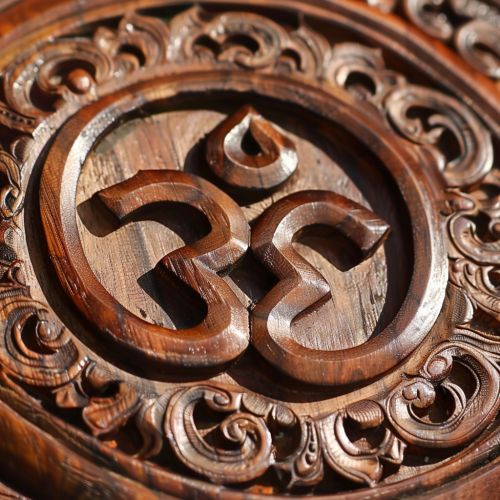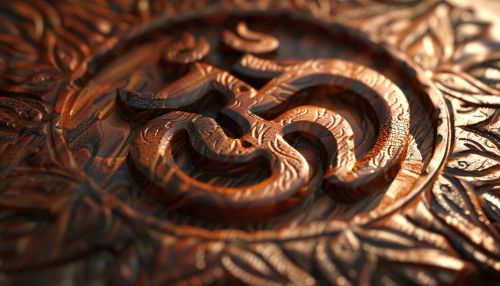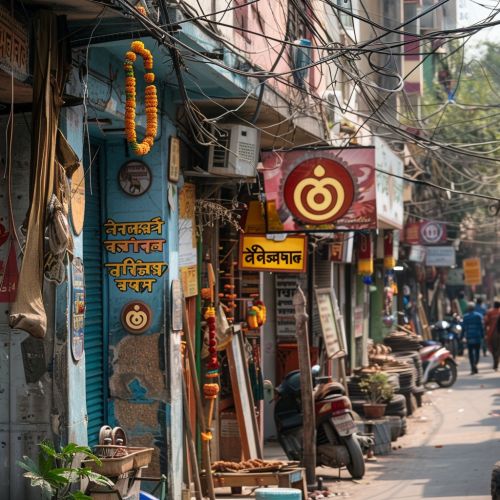Om
Introduction
The term "Om" or "Aum" is a sacred sound and a spiritual icon in Indian religious traditions. It is also a mantra in Hindu, Buddhist, and Jain traditions. This mystical syllable is used in various forms of meditation and religious practices, signifying the essence of the ultimate reality, consciousness, and inner self.


Etymology and Semiotics
The syllable "Om" is referred to as praṇava, meaning "that which is sounded out loudly". The term is derived from the Sanskrit root "au", which means "to sound". The syllable is often found at the beginning and the end of chapters in the Vedas, the Upanishads, and other Hindu texts.
The Om symbol, represented in the Devanagari script, is a combination of curves, a dot, and a semicircle. The large lower curve symbolizes the waking state of consciousness, the upper curve represents the state of deep sleep, and the lower curve on the right signifies the dream state. The dot signifies the fourth state of consciousness, known as turiya. The semicircle at the top represents maya, or illusion, suggesting the reality of the states of consciousness is obscured by it.
Philosophical Interpretations
In Hindu philosophy, Om is considered as a cosmic sound, the sound/vibration that was present at the creation of the universe. It is believed to be the root of the universe and everything that exists and it continues to hold everything together.
In the Mandukya Upanishad, one of the ancient Sanskrit texts, Om is used as a tool for meditation, explaining the metaphysics of human consciousness. It divides the consciousness into four states, namely, waking (jagrat), dreaming (swapna), deep sleep (sushupti), and a transcendental state (turiya) which is beyond the previous three states. Each state is associated with a part of the Om sound, and the entire syllable represents the totality of consciousness.
In Buddhism, Om corresponds to the crown chakra and the concept of infinite knowledge. In Jainism, Om is considered a condensed form of reference to the five parameshthis, by their initials A+A+A+U+M (o3m).
Usage in Religious Practices
Om is used in various religious practices, including yoga and meditation. In yoga, Om is often chanted at the beginning and end of sessions. It is believed to have a calming effect on the mind and body, preparing the individual for a deeper state of meditation.
In Hindu rituals, Om is often used in prayers and chants, and is also a common prefix to many mantras. It is believed to generate positive vibrations, promoting peace and harmony.
In Buddhism, Om is often incorporated into mantras and is used in ceremonies and rituals. Similarly, in Jainism, Om is considered auspicious and is used in various religious ceremonies.
Cultural Impact
Om has a significant cultural impact, especially in India. It is often seen in art, architecture, and daily life. It is common to find the Om symbol in Hindu temples, religious festivals, and cultural events. The symbol is also used in body art, jewelry, and fashion.
In recent years, Om has gained popularity in the West, particularly within the context of yoga and meditation practices. It is often associated with spirituality, mindfulness, and wellness.


